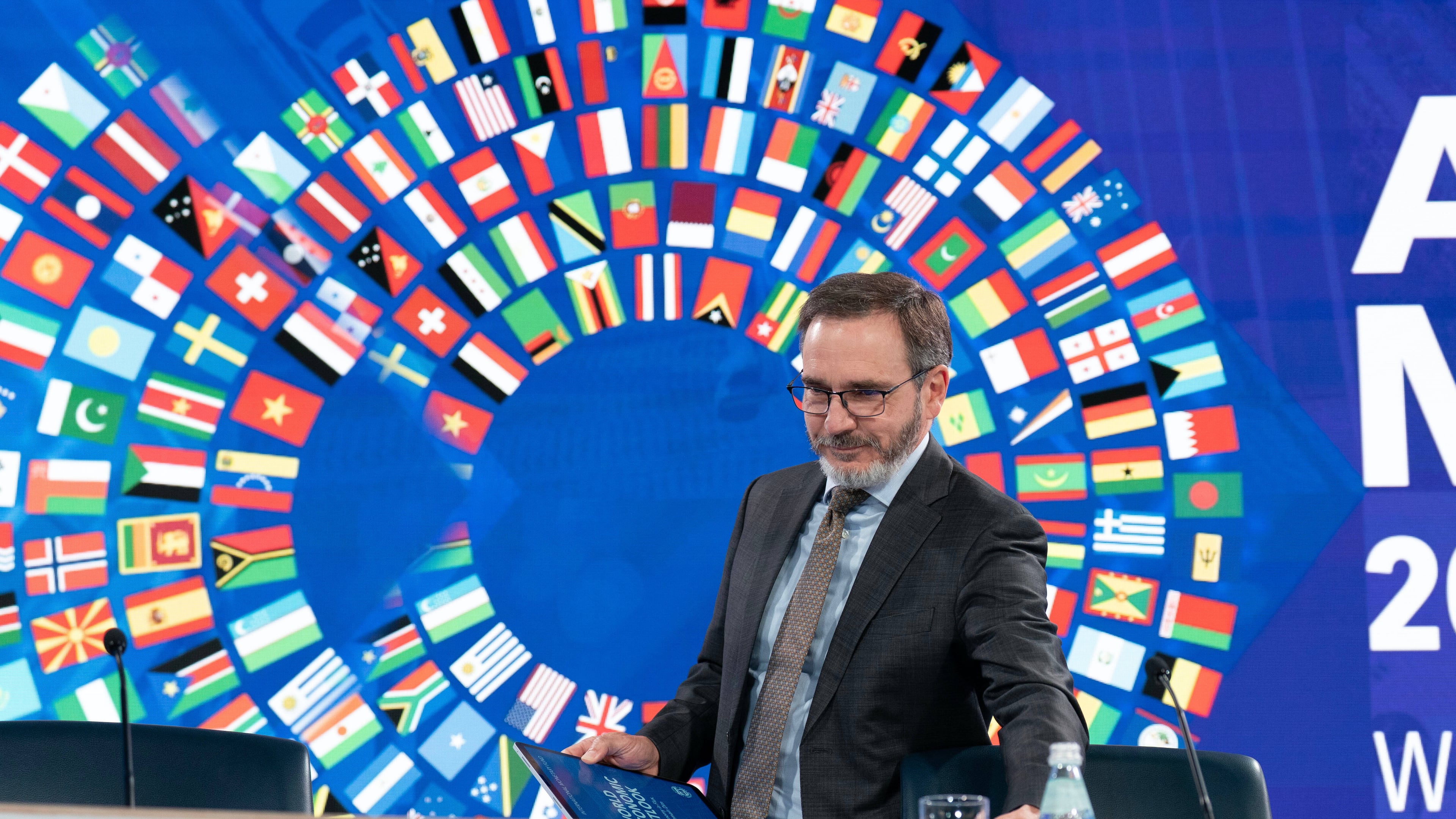IMF upgrades US growth outlook as Trump's tariffs cause less disruption, for now

WASHINGTON (AP) — The U.S. and global economies will grow a bit more this year than previously forecast as the Trump administration's tariffs have so far proved less disruptive than expected, the International Monetary Fund said Tuesday, though the agency also said the extensive duties still pose risks.
The United States' economy will expand 2% in 2025, the IMF projected in its influential semi-annual forecast, the World Economic Outlook. That is slightly higher than the 1.9% forecast in the IMF's last update in July and 1.8% in April. The U.S. should grow 2.1% next year, also just one-tenth of a percent faster than its previous projection, the IMF said.
The global economy, meanwhile, will grow 3.2% this year, up from a 3% estimate in July, the IMF forecast, and 3.1% in 2026, the same as its previous estimate.
The figures represent a bit of a round-trip for the IMF: In January, before President Donald Trump began imposing tariffs, it had forecast global growth of 3.3%, only slightly higher than its newest estimate. While the U.S. and world economies have fared better than expected, it's too soon to say they are fully in the clear, the IMF said, as Trump has continued to make tariff threats and it can take time for changes in international trade patterns to play out.
On Friday, for example, Trump threatened to slap 100% duties on all imports from China, which caused a sharp fall in the stock market.
IMF chief economist Pierre-Olivier Gourinchas said at a news conference that the import taxes and ongoing threats to impose more duties have created ongoing uncertainty for many businesses and it's weighing on the world economy.
“The tariff shock is here, and it is further dimming already weak growth prospects,” he said.
Gourinchas also said that a burst of investment in artificial intelligence, in the form of huge data centers and extensive computing power, has helped offset the drag from trade and boosting the U.S. economy. Yet if a financial market bubble formed and then burst, it could sharply slow business investment and consumer spending, he said.
“There are echoes in the current tech investment surge of the dot-com boom of the late 1990s," he said. “It was the Internet then, it is AI now.”
Shares of two companies active in the AI sector, AMD and Oracle, which announced an expanding partnership Tuesday, have seen their shares rise 80% this year.
Gains in AI-related stock values have lifted Americans' wealth and fueled consumer spending, Gourinchas said, just as companies are ramping up their investments in advanced computer chips and building data centers. Hotter spending and investment could push central banks to raise interest rates over time, he said.
Gourinchas also offered several reasons the U.S. and global economies have remained resilient after the widespread imposition of tariffs earlier this year.
“First and foremost, the tariff shock itself is smaller than initially feared, with many trade deals and exemptions,” he said. "Most countries also refrained from retaliation, keeping the trading system open. And the private sector also proved agile, front-loading imports and re-routing supply chains.”
By front-loading imports, many U.S. companies were able to stock up on goods before the duties took effect, enabling them to avoid or delay price increases.
Yet many of those factors only reflect "temporary relief, rather than underlying strength in economic fundamentals,” the IMF's report said.
The IMF also said that import price data in the U.S. shows that so far importers and retailers are paying most of the tariffs, not overseas companies, as many Trump administration officials have predicted. Over time, those firms are likely to pass on more of the price hikes to consumers, the report said.
There are signs that some downsides of the higher tariffs are starting to emerge, the IMF outlook said. Core inflation, which excludes the volatile food and energy categories, has ticked up to 2.9%, according to the Federal Reserve's preferred measure, up from 2.7% a year ago. Hiring has ground to nearly a halt, which could partly reflect a more cautious approach by many firms in the wake of the uncertainty created by the higher tariffs.
The IMF's forecasts are modestly more optimistic than many private-sector economists' expectations. The National Association for Business Economics, a group of academic and business economists, on Monday forecast that the U.S. would grow just 1.8% this year and 1.7% in 2026.
Nearly two-thirds of the economists surveyed by the NABE said they think the administration's duties are nevertheless slowing growth, by up to a half-percentage point.
China, meanwhile, has weathered the hit from U.S. tariffs by sending more of its goods to Europe and Asia, rather than the United States, the IMF said. Its currency has depreciated, which has made its exports cheaper. The IMF is forecasting that China's economy will expand 4.8% this year and 4.2% in 2026, the same as in July.
Gourinchas said that China's economy has grown increasingly dependent on exports, while its real estate sector continues to struggle under heavy debt loads.
“It is increasingly hard to see how this could be sustained,” he added.
In Europe, Germany is bolstering growth by increasing government spending to build up its military, Gourinchas said. The IMF now expects the 20 countries that use the euro to grow 1.2% this year, up from a 1% forecast in July, and 1.1% next year, the same as three months ago.
The IMF is a 191-nation lending organization that works to promote economic growth and financial stability and to reduce global poverty.

